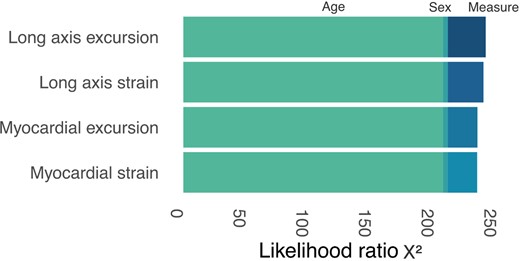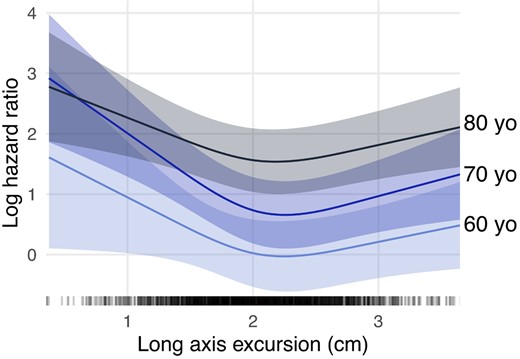-
PDF
- Split View
-
Views
-
Cite
Cite
A Cunha De Almeida, C C Stowell, J P Howard, T Ng, G D Cole, S Bhattacharyya, J Sehmi, M Alzetani, C D Demetrescu, A Singh, K Mangion, R Rajani, B S Rana, D P Francis, M J Shun-Shin, Which echocardiographic measure of longitudinal function is most informative?, European Heart Journal, Volume 45, Issue Supplement_1, October 2024, ehae666.040, https://doi.org/10.1093/eurheartj/ehae666.040
Close - Share Icon Share
Abstract
The longitudinal function of the left ventricle can be quantified by measuring the myocardial excursion with or without normalising by the diastolic length to derive strain. Furthermore, these lengths can be determined from the curved myocardial length or in a straight-line from the mid-annulus to the apex parallel to the long axis. All four combinations have been advocated and used, but the optimal is unknown.
Compare the prognostic information contained by these four measures of longitudinal function in a large retrospective cohort, with measurements performed by AI.
The cohort consisted of echocardiograms performed during 2015 at our institution for which mortality data were available. Our previously published AI based view classifier selected the apical 4-, 2-, and 3-chamber views from each study, before the endocardial contour and annular and apical points were segmented by another neural network. From this the curved and long-axis excursion was calculated, and then strain was derived using the diastolic length. Nested non-linear Cox-models including age and sex and each of the longitudinal measures were constructed, and the information contained by each variable was quantified via Chi-Square and compared using bootstrap methods.
1733 patient studies were included, the median age was 64 (IQR 49 to 75) years and 51% were male. A total of 213 (14%) deaths occurred. The median excursion and strains were 3.25 cm (IQR 2.68 to 3.81) and -17% (IQR -20% to -14%) along the endocardial curve and 2.36 cm (IQR 1.88 to 2.87) and -14% (IQR -17% to -11%) along the long axis. All four longitudinal measures significantly added to a base model containing age and sex (p=0.003, p=0.005, p=0.005, p=0.002). Whilst the simple long axis excursion was numerically the most prognostic, none of the measures were significantly different from each other.

Information provided by model components

Long axis excursion calibration curve
Author notes
Funding Acknowledgements: Type of funding sources: Foundation. Main funding source(s): British Heart Foundation
National Institute of Health and Research Biomedical Research Centre



